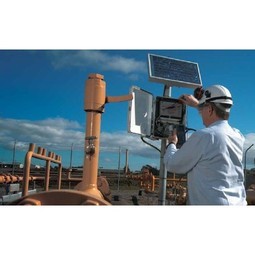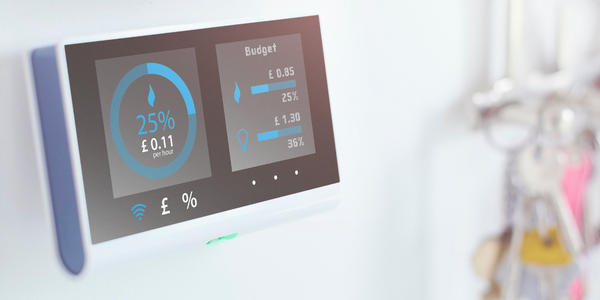技术
- 应用基础设施与中间件 - 事件驱动型应用
- 平台即服务 (PaaS) - 应用开发平台
适用行业
- 水泥
- 公用事业
用例
- 施工管理
- 基础设施检查
服务
- 云规划/设计/实施服务
关于客户
JW Power Company 是一家天然气压缩机制造服务提供商,总部位于德克萨斯州达拉斯。由于天然气市场低迷,该公司面临着重大挑战,导致多次资产剥离和裁员,尤其是 IT 部门。尽管内部资源有限,该公司需要一种可以帮助他们满足定制本土应用程序需求的解决方案。他们需要一个易于 IT 和业务开发人员使用、能够降低内部 IT 成本并提供可扩展的云基础设施的平台。
挑战
JW Power Company 是一家位于达拉斯的天然气压缩机制造服务提供商,由于天然气市场低迷,该公司面临着重大挑战。该公司必须应对多次剥离和裁员,特别是 IT 部门和开发人员的人员配置。由于该公司缺乏必要的内部资源,这种情况给满足定制本土应用程序的需求带来了重大障碍。我们面临的挑战是找到一种解决方案,帮助人手不足的 IT 团队清除积压的应用程序请求、降低内部 IT 成本并提供可扩展的云基础设施。
解决方案
该公司转向 Caspio,这是一个低代码平台,使人手短缺的 IT 团队能够满足自定义应用程序的需求。 Caspio 的平台对于 IT 和业务开发人员来说都易于使用,使他们能够快速高效地创建应用程序。团队可以采用用于操作数据或提供简单工作流程的电子表格,将其直接导入 Caspio 工作台,并立即创建一个成熟的应用程序。 Caspio 还提供了在需要时注入代码的附加功能,使其成为该公司的多功能解决方案。此外,Caspio 提供了安全可靠的在线数据库,全部在云中管理,消除了内部基础设施管理的需要。这一功能对公司的基础设施部门特别有吸引力。此外,Caspio 具有成本效益的价格点使其成为该公司有吸引力的选择。
运营影响

Case Study missing?
Start adding your own!
Register with your work email and create a new case study profile for your business.
相关案例.

Case Study
IoT Solutions for Smart City | Internet of Things Case Study
There were several challenges faced: It is challenging to build an appliance that can withstand a wide range of voltage fluctuations from as low at 90v to as high as 320v. Since the device would be installed in remote locations, its resilience was of paramount importance. The device would have to deal with poor network coverage and have the ability to store and re-transmit data if networks were not available, which is often the case in rural India. The device could store up to 30 days of data.

Case Study
Automation of the Oguz-Gabala-Baku water pipeline, Azerbaijan
The Oguz-Gabala-Baku water pipeline project dates back to plans from the 1970’s. Baku’s growth was historically driven by the booming oil industry and required the import of drinking water from outside of the city. Before the construction of the pipeline, some 60 percent of the city’s households received water for only a few hours daily. After completion of the project, 75 percent of the two million Baku residents are now served around the clock with potable water, based on World Health Organization (WHO) standards. The 262-kilometer pipeline requires no pumping station, but uses the altitude differences between the Caucasian mountains and the capital to supply 432,000 m³/d to the Ceyranbatan water reservoir. To the people of Baku, the pipeline is “the most important project not only in 2010, but of the last 20 years.”

Case Study
GPRS Mobile Network for Smart Metering
Around the world, the electricity supply industry is turning to ‘smart’ meters to lower costs, reduce emissions and improve the management of customer supplies. Smart meters collect detailed consumption information and using this feedback consumers can better understand their energy usage which in turn enables them to modify their consumption to save money and help to cut carbon emissions. A smart meter can be defined in many ways, but generally includes an element of two-way communication between the household meter and the utility provider to efficiently collect detailed energy usage data. Some implementations include consumer feedback beyond the energy bill to include online web data, SMS text messages or an information display in consumers’ premises. Providing a cost-effective, reliable communications mechanism is one of the most challenging aspects of a smart meter implementation. In New Zealand, the utilities have embraced smart metering and designed cost effective ways for it to be implemented. The New Zealand government has encouraged such a move to smart metering by ensuring the energy legislation is consistent with the delivery of benefits to the consumer while allowing innovation in this area. On the ground, AMS is a leader in the deployment of smart metering and associated services. Several of New Zealand’s energy retailers were looking for smart metering services for their residential and small business customers which will eventually account for over 500,000 meters when the multi-year national deployment program is concluded. To respond to these requirements, AMS needed to put together a solution that included data communications between each meter and the central data collection point and the solution proposed by Vodafone satisfied that requirement.

Case Study
System 800xA at Indian Cement Plants
Chettinad Cement recognized that further efficiencies could be achieved in its cement manufacturing process. It looked to investing in comprehensive operational and control technologies to manage and derive productivity and energy efficiency gains from the assets on Line 2, their second plant in India.

Case Study
NB-IoT connected smart meters to improve gas metering in Shenzhen
Shenzhen Gas has a large fleet of existing gas meters, which are installed in a variety of hard to reach locations, such as indoors and underground, meaning that existing communications networks have struggled to maintain connectivity with all meters. The meter success rate is low, data transmissions are so far unstable and power consumption is too high. Against this background, Shenzhen Gas, China Telecom, Huawei, and Goldcard have jointly trialed NB-IoT gas meters to try and solve some of the challenges that the industry faces with today’s smart gas meters.

Case Study
British Gas Modernizes its Operations with Innovative Smart Metering Deployment
The UK government has mandated that smart meters are rolled out as standard across Great Britain by end of 2020, and this roll-out is estimated to create £14 billion in net benefits to the UK in consumer energy savings and lower energy generation demand, according to the Oxford Economics report, “The Value of Smart Metering to Great Britain.” While smart-metering systems have been deployed in many countries, the roll-out in Great Britain is unique because it is led by energy retailers, who have responsibility for the Electricity and Gas meters. The decision to have a retailer-led roll out was made by DECC (Department of Energy and Climate Change) to improve customer experience and drive consumer benefits. It has also led to some unique system-level requirements to support the unique local regulatory model.







